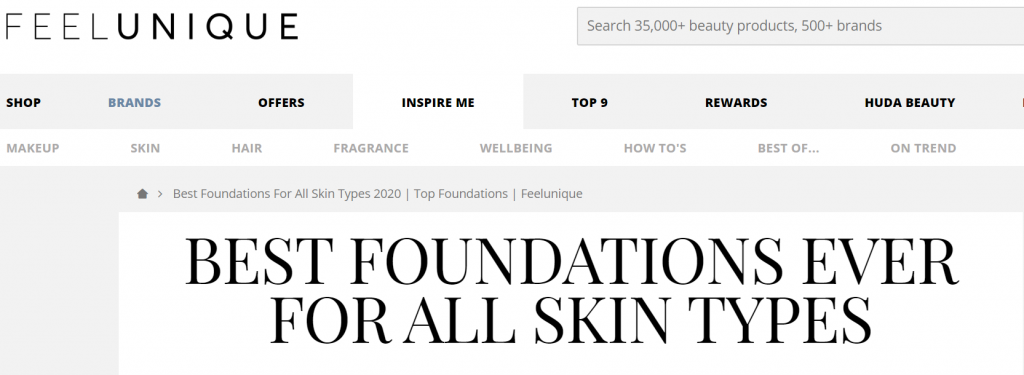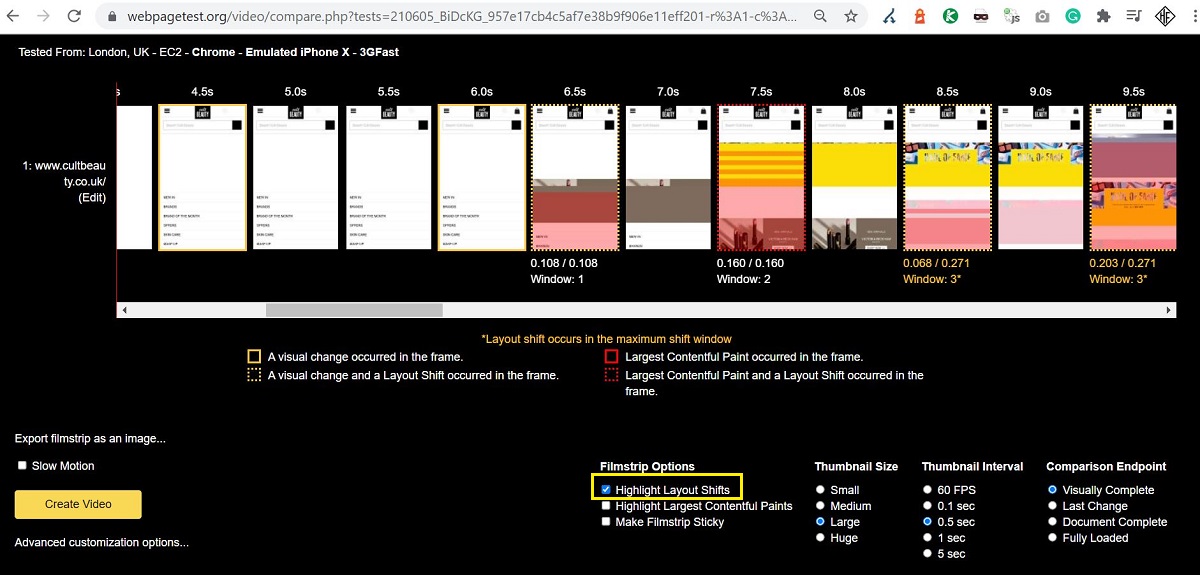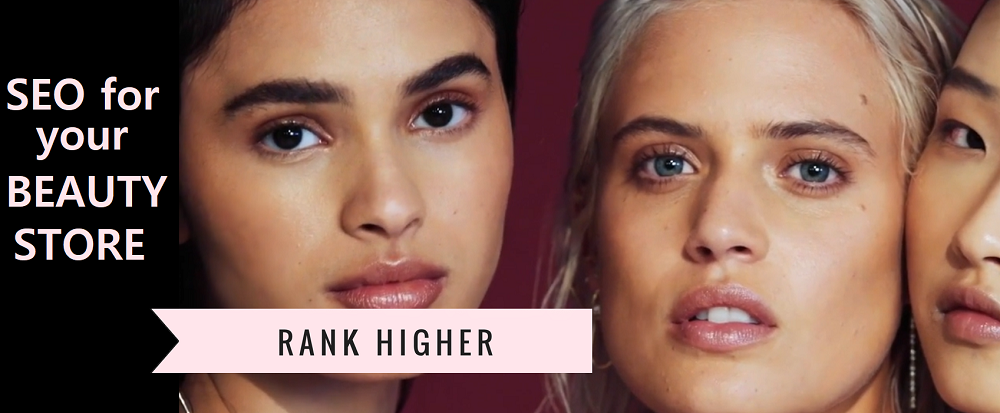Beauty is a multi-billion industry in the UK and according to analysts, this will become even bigger and will continue to grow faster than ever compared to other industries. Digital marketing has greatly impacted the beauty industry by making it easier to reach customers worldwide through marketing channels and online platforms. It’s all anyone can blog about, post about or talk about in real life. There are so many influencers, bloggers, and vloggers that are disseminating information.
The beauty market is incredibly influential in skincare. More and more new beauty brands are popping up because it is a booming industry. Most beauty brands invest a lot of marketing budget on social (especially TikTok, Instagram, Facebook and YouTube) as that’s where the bulk of their audience spends time the most in researching skincare, personal care, makeup, fragrances, toiletries, hair care & grooming products, accessories for eyes, face, lips, nails, colour cosmetics and more. With SEO, however, customers will be able to visit your site online for free if you dominate high-volume beauty keywords.
Let’s look at some of the big players in the beauty industry that dominate SEO. Below is the recently released leader board released by PI-Datametrics for the Beauty Industry showing brands that dominate in Google UK.

Beauty is one of the most competitive industries when it comes to SEO presence. The SERPs are dominated by leading multi-brand retailers such as Superdrug, iconic brands like L’oreal, fashion magazines like Cosmopolitan, new and independent beauty brands like Beauty Bay, Cult Beauty etc and YouTube videos in the SERPs. Before you start building your SEO and content strategy for your beauty brand, it’s essential to understand your audience/buyer personas.
SEO tips for Beauty Industry websites
So, what’s the objective of this Beauty industry search engine optimisation guide?
- Improve page rankings for beauty terms on major search engines and outrank the fierce competition.
- Show up for your brand name for “beauty term + city” searches in your local area.
- Make some savings from otherwise expensive high CPC beauty search terms. An increase in organic traffic and better rankings would mean increased ROI.
STEP 1: Beauty Keyword Research
Keyword research is the most important step when it comes to eCommerce Beauty SEO. The keyword research will depend on the type of Beauty website and your target audience. The objective here is to optimise for the high-volume keywords relevant to your target audience who could fall under the below categories;
- Younger Age Demographics / Millennials.
- Ageing Population
- Gender-specific. Could cater to both men & women or could be in the market for men’s beauty products & cosmetics only.
- Environmentally-Friendly Products.
- Cruelty-free, vegan and 100% organic brand products.
- High-end luxury consumers.
Based on the target audience, this step involves identifying the target search terms to feed into your SEO & Brand Content strategy.
Let’s take a look at some of the top search terms in the Beauty industry. According to SEMRush, in Google UK, “make up” related keywords get around 6.8 million searches per month. “Skincare” variations get around 600,000 searches per month and lastly “beauty” variations make up around 11 million searches per month.
Below is the 12-month seasonality trend for top terms such as skincare, makeup and beauty keywords. The keywords were gathered using a combination of SEMRush & Google Keyword Planner. Ahrefs, Soovle, UberSuggest, KeywordResearch.io and Moz Keyword Explorer are other tools you could use to perform keyword research.
Skin Care SEO Keywords

As you can see, the term “tropical skincare” has the highest average monthly searches which peak in December. Click here to view the complete list of Skincare SEO keywords. Please note, I have excluded keywords with an average search volume of less than 100.
Makeup SEO Keywords

As you can see, the term “makeup” has the highest average monthly searches which peak in November. Click here to view the complete list of makeup SEO keywords. Please note, I have excluded keywords with an average search volume of less than 500.
Beauty Keywords List

As you can see, the brand term “beauty bay” has the highest average monthly searches which peak in November. Click here to view the complete list of beauty SEO keywords. Please note, I have excluded keywords with an average search volume of less than 400.
Shortlist the best high-value keywords that your potential customers might be using from your keyword research. The search volume, competition, keyword relevancy and intent are some of the factors to consider when identifying the best keywords for your beauty brand.
STEP 2: Have a Solid Keyword Driven Content Strategy
Shoppers are purchasing more beauty products online than ever before because they want to research online before making a purchase. Let’s not forget the pandemic. 2020 was a crazy year for all of us and the craziness still continues to exist to a certain extent. The pandemic accelerated the online shopping trends which forced beauty brands to essentially think more carefully about the kind of content they produce. It’s become much more important for brands to produce content around the needs and interests of their audience. There’s a huge opportunity for beauty brands to provide good engaging content for all stages of the purchase funnel to truly connect with their audience and increase engagement with consumers.
The data from the beauty keyword research step is very valuable in coming up with an effective content strategy to address search intent. Whether it’s on platforms like Instagram / Facebook, Influencer blogs, online videos or via the site’s own blog, the brands are investing a lot of money in producing the right content to be seen by their target audience. A blog these days is a must-have for a brand to distribute valuable content online and a way to improve rankings of your primary and long-tail keywords.
Beauty SEO Content Strategy Tips
- Get in front of the shoppers early in the research phase. Have a dedicated slot on the homepage to link to your content.
- Identify the content pillars that will form the basis of your ongoing content. Remember that to retain audiences and to keep them coming back, you’ll need to create a brand personality, tone, and atmosphere that is familiar to your fans. That’s why creating content pillars and sticking to them will enable you to create the right content that stands out as well. Examples of content pillars for the beauty industry;
- Makeup
- Beauty
- Haircare
- Wellness
- Trends / What’s Trending
- Culture & Celebrity
- Fashion
- Brand events & shows, behind-the-scenes
- Looks
- Product Picks
- Tips, How-To & Tutorials
- Create content to answer user content by targeting your keywords in all your content pieces.
- Don’t just stick to makeup and beauty content. Try to include broad lifestyle content about travel, fashion, culture & celebrity content. Always consider your brand’s audience and identity when determining whether to keep content broad or narrow.
- The best forms of beauty content are helpful advice, how-to’s, tutorials and beauty lessons.
- Optimise your internal linking to link to the key beauty product categories and pages from within your blog content.
- Include guest posts by beauty influencers on your blog to engage with the influencer audience.
- Create content with social channels in mind. Add lots of videos and images to your blog posts as visual content adds life to text-only content. Additionally, these assets can be shared on social media and YouTube and can link back to your site.
Let’s now look at the top-performing blog posts of popular online brands
 One of beautybay.com’s top-performing articles targets the term “brow lamination” which gets around 40.5k searches per month for the exact match term and a total volume of 73.5k per month with all variations included.
One of beautybay.com’s top-performing articles targets the term “brow lamination” which gets around 40.5k searches per month for the exact match term and a total volume of 73.5k per month with all variations included.
 One of feelunique.com’s top-performing articles targets the term “best foundation” which gets around 22.2k searches per month for the exact match term and a total volume of 556.9k per month with all variations included.
One of feelunique.com’s top-performing articles targets the term “best foundation” which gets around 22.2k searches per month for the exact match term and a total volume of 556.9k per month with all variations included.
 One of superdrugs.com’s top-performing articles targets the term “nail shapes” which gets around 22.2k searches per month for the exact match term and a total volume of 559.3k per month with all variations included.
One of superdrugs.com’s top-performing articles targets the term “nail shapes” which gets around 22.2k searches per month for the exact match term and a total volume of 559.3k per month with all variations included.
From the above examples, what’s common is the brand’s top blog pages focus on high-commercial intent keywords via how-to’s or informative advice posts. It’s important for every brand to develop original, shareable, engaging content that gets linked automatically because of its value.
STEP 3: Perform a Technical SEO Site Audit
Beauty retailer sites are usually large eCommerce websites with thousands of pages with several products which is precisely why It is essential to have a website that is implemented correctly from a technical perspective. Tools like ScreamingFrog, Botify, Deepcrawl, Oncrawl, Sitebulb, etc let you perform technical SEO audits. A few things that need to be considered to improve your visibility online are;
-
- Having the right site structure affects the website’s visibility in a positive way.
- Fast site load speed is vital to any website as it improves user experience and is also one of the ranking factors. Google’s Page Speed Insights can provide a good insight into your website’s page speed metrics, and the issues and actions you need to take to improve your page speed scores. There are other tools like WebPageTest, GTMetrix, etc that can be used for the same purpose.
- Google announced that Core Web Vitals will become a ranking signal for their search results in June 2021. This is both an opportunity and a threat for eCommerce websites to start thinking about page speed in everything that they develop and release. I analysed the core web vitals scores for https://www.cultbeauty.co.uk/ using Google Page Speed Insights and WebPageTest. Both test results showed Cult Beauty failing for LCP and CLS metrics. To visualise the CLS of the page, I used WebPageTest for the Cult Beauty homepage.


- Fix broken links (404 pages). Check out the newly refreshed Google crawl stats interface within your search console to spot some of the crawl issues encountered by Googlebot.
- Ensure your site is designed with mobile-first and mobile-friendly principles in mind.
- You can’t avoid large brand images on a beauty website. Ensure they are well compressed using lossless compression and create images of the right sizes.
- Implement schema on your site to provide additional information for search engines to understand your pages better. Beauty websites typically have schema implemented on product pages and breadcrumbs on product listing pages.
 Example of a SERP for a Boots beauty product that stands out displaying additional product information such as product ratings and reviews, stock availability and price. Customers are more likely to make a purchase from a site that has high ratings.
Example of a SERP for a Boots beauty product that stands out displaying additional product information such as product ratings and reviews, stock availability and price. Customers are more likely to make a purchase from a site that has high ratings.
Step 4: On-page Optimisation
Make sure you optimise the site page with the right keywords. If you are a new brand, produce content to target long-tail keywords before moving on to broad and highly competitive search terms.
- Optimised page titles, headings, meta descriptions, body text and URLs using your target terms.
- Optimise your product listing pages and product description pages with relevant headings and add lots of details about the product talking about its benefits. Urbandecay & Glossier are great examples of optimised product description pages with a lot of product content, visuals (photos & videos) and a reviews section to convince the visitor to purchase.
- Include alt text for your website’s images.
Check out my On-Page SEO checklist to know other important on-page elements to consider optimising to improve visibility.
Step 5: Off-page Optimisation
Backlinks are one of the most critical Google ranking factors besides tech and on-page SEO. There is a correlation between higher rankings on pages with high-quality backlinks. Develop a long-term white-hat link-building strategy to obtain high-quality backlinks from local and relevant websites that not only counts as a vote but also drive relevant referral traffic.
- Don’t just build links to the homepage. Your links profile must also include deep links pointing to your product lister and product description pages.
- Competitor backlink research: Use tools like Ahrefs, Majestic, SEMRush, Open site explorer or Backlinko to spy on competitor backlinks.
- Outsource your link building, Digital PR and influencer outreach to a specialised agency as this is a full-time job while you focus on the on-page and the tech SEO elements.
Step 6: Local SEO
If you own a physical store and want to appear for brand name + city/near me searches, then there are a few things to consider to improve your local SEO ranking.
Set up a Google My Business account for your store locations. This is required if you want to appear on the Google local pack for near me or brand local searches. You can enrich your GMB listings by adding photos, optimised business descriptions targetting your high-volume keywords, and showcasing your reviews and social channels.

Step 7: Beyond Google: SEO on Social / Video Platforms
Google, as we know it is designed to serve the user the best and most relevant search results to the user queries. Back in the day, Google was probably the most used platform for all your information needs. There is a shift from people searching for their information or trends on social platforms such as Instagram, TikTok, YouTube, Pinterest etc.
People use Google to not only search for keywords such as “skincare creams” but also use it for conversational long-tail queries such as “best skincare creams for winter”. There is a huge increase in the various different search formats appearing in the SERPs for beauty and fashion queries in the form of social results, video results, people also ask sections, answer boxes, featured snippets etc. What we need to do is to think beyond the website and have a holistic search and content strategy that goes beyond Google – video platforms, social platforms etc. So don’t confine SEO to just your website. You must also apply SEO best practices across other platforms such as
- Instagram: Instagram has updated its search functionality in order to try and keep users engaged on the platform. Instagram also allows you to add alt texts to your images.
- TikTok is a major contender for Instagram and is constantly updating its platform as well in order to keep users on there.
- YouTube is the second biggest search engine in the world.
- Pinterest can generate a load of traffic to your pins just by applying basic SEO practices to your pinned images. This also drives traffic to your website.
I hope this gives you a good starting point to improve SEO for your beauty website online. If you are a beauty/cosmetics brand looking for SEO consultancy, Contact me today!


👍👍